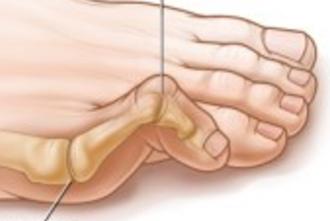We’ve all sat down for too long and experienced that painful pins and needles feeling when our foot “fell asleep.”
But some people experience numbness or burning in their feet regularly, and for these individuals, it’s often smart to seek professional evaluation.
There are a number of causes of seething or tingling feet, but we’ll review the most common to help you narrow down the culprit:
Pinched Nerve (Neuroma)

A neuroma is a benign growth of nerve tissue and is often called a “pinched” nerve. It can cause a searing, burning pain between your toes or around the ball of your foot. It’s sometimes described to feel like constantly stepping on a little stone.
Specialists can offer anti-inflammatory medications, steroids, cortisone or sclerosis injections to help reduce puffiness. Sometimes, getting someone out of heels or fitted into specially designed orthotics can also make a world of difference.
The problem with this condition is that all the pain is happening inside your foot, beneath the surface unlike other easier to diagnose foot problems such as bunions or plantar warts. A pinched nerve often requires professional examination with an MRI machine, and if left uncared for, can cause severe pain and radical inflammation. In extreme causes, surgical removal of the nerve may serve as the only form of relief.
Learn more about Neuroma and how we diagnose and treat this foot condition by exploring our services.
Diabetic Neuropathy
For those with diabetes, the disease can cause nerve damage as a result of high blood sugar and result in foot numbness. This condition, known as diabetic neuropathy, has four different conditions, but the most common foot tingling culprit is peripheral neuropathy.
There are medications you can be prescribed to help with the discomfort, but diabetic neuropathy can typically be prevented by maintaining healthy blood sugar levels and proper foot care.
This condition is often seen in elderly patients, who may have problems reaching their feet or suffer from poor circulation. Clumsy nail clips, overgrown nails or the inability to see or feel their feet could lead to infections and foot ulcers, so for sufferers, we typically recommend more frequent check-ups.
At Foot & Ankle Group, we see our diabetic patients every nine weeks to ensure no problems go unnoticed or neglected. We also offer personalized guidance and advice for preventing diabetic foot problems here.
Read more about our Diabetic Foot Care and our treatment options on our services page.
Hammertoes

Is the numbness affecting just your toes? Sometimes those who suffer from bent, archy hammertoes can experience tingling or burning pain from numbness or poor circulation.
Numbness in your toes can be caused by genetics, trauma to your toes, diseases (like diabetes) and more.
Hammertoe sufferers typically benefit from wearing proper fitting or custom fitted footwear/inserts or taking medications. We offer some tips for soothing hammertoe pain, but oftentimes, relief comes from getting your curled toes straighten out with splints, therapy or, in extreme cases, surgery.
Learn more about our Hammertoes care with our team at Foot & Ankle.
Get Your True Diagnosis
Doing some initial research can be helpful to narrow down your problem, but it’s always wise to turn to a professional for final confirmation. These are just a few possible conditions, and a podiatrist might even have to refer you to another specialist if you’re suffering from a vitamin deficiency, kidney failure, autoimmune disease or other conditions, which cause hot or tingling feet.
If you are experiencing severe pain or foot numbness, we can get you in right away— oftentimes, the same day.Schedule your consultation with a trusted podiatrist today by calling us at Foot & Ankle Group at 239-936-5400.
Categorized in: Blog